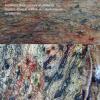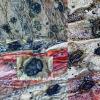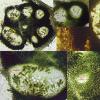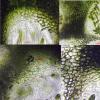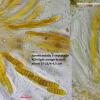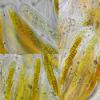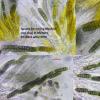
14-11-2025 16:26
 Marian Jagers
Marian Jagers
Hello everyone, On dead wood of Cytisus scoparius

17-11-2025 21:46
Philippe PELLICIERBonjour,Récolté sur bois pourrissant de feuillu

20-11-2025 14:14
Mick PeerdemanFound on the leaves of 'Juglans regia' in the Neth

20-11-2025 13:07
Mick PeerdemanIn January i found these black markings on the dea

20-11-2025 12:38
Mick PeerdemanDear all,Last week i stumbled upon a leaf of ilex

19-11-2025 23:21
 carl van den broeck
carl van den broeck
Dear guestIn Waardamme, Belgium, I found dozens of

19-11-2025 20:51
 Andreas Millinger
Andreas Millinger
Good evening,found this species on a felled trunk

19-11-2025 13:04
 Bruno Coué
Bruno Coué
Bonjour,je sollicite votre avis pour la récote
ascomycete on Agave from Portugal
Lothar Krieglsteiner,
11-03-2025 17:22
 found last November in the Algarve, Serra Monchique. Who can provide me with a hint?
found last November in the Algarve, Serra Monchique. Who can provide me with a hint?Yolurs, Lothar
Hardware Tony,
12-03-2025 15:21

Re : ascomycete on Agave from Portugal
Hi Lothar,
Take a look at Phaeosphaeriopsis obtusispora, as the spores blacken in Lugols, the size fits and the key was the central cell slightly larger than the rest. Looked at Leptospharia also as this is a key feature of spores in that genera also. Or in and around Phaeosphaeriaceae. Just an option perhaps,
regarsd Tony
Take a look at Phaeosphaeriopsis obtusispora, as the spores blacken in Lugols, the size fits and the key was the central cell slightly larger than the rest. Looked at Leptospharia also as this is a key feature of spores in that genera also. Or in and around Phaeosphaeriaceae. Just an option perhaps,
regarsd Tony
Lothar Krieglsteiner,
12-03-2025 15:33

Re : ascomycete on Agave from Portugal
Hello Tony,
thank you very much for this hint that - I will follow it in the next days. At first glance it looks if it could be a "Hit the bull's eye".
Best regards, Lothar
thank you very much for this hint that - I will follow it in the next days. At first glance it looks if it could be a "Hit the bull's eye".
Best regards, Lothar
Lothar Krieglsteiner,
12-03-2025 16:21

I think better P. agavensisl
Using the key in Thambugala & al. (Phylogeny and morphology of Phaeosphaeriopsis triseptata sp. nov., and Phaeosphaeriopsis glaucopunctata) I come to P. agavensis, because the ascomata are partly multilocular (as can bee seen in the section in my second picture). The spore width fits better, too, even if the spore length is a little bit large.
Thanks again, Tony!
Thanks again, Tony!

